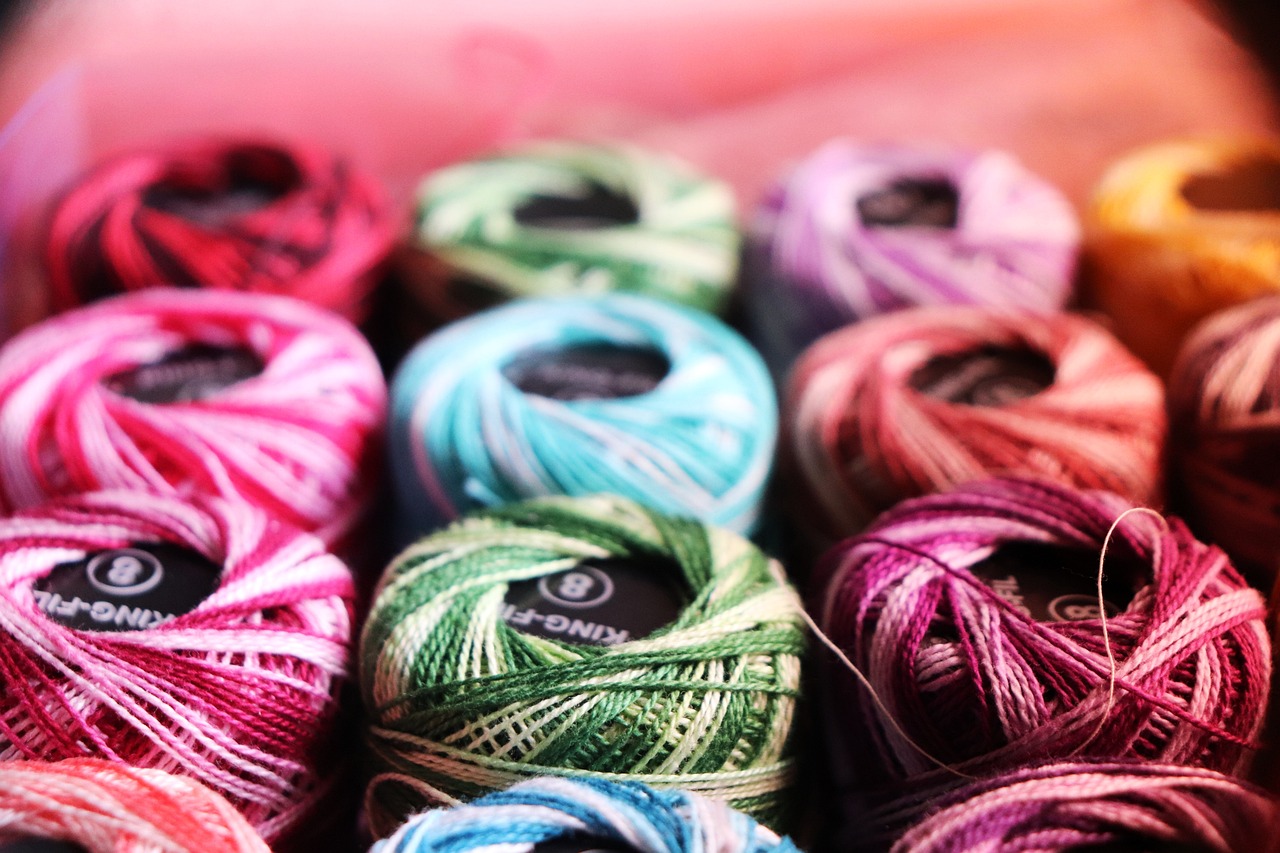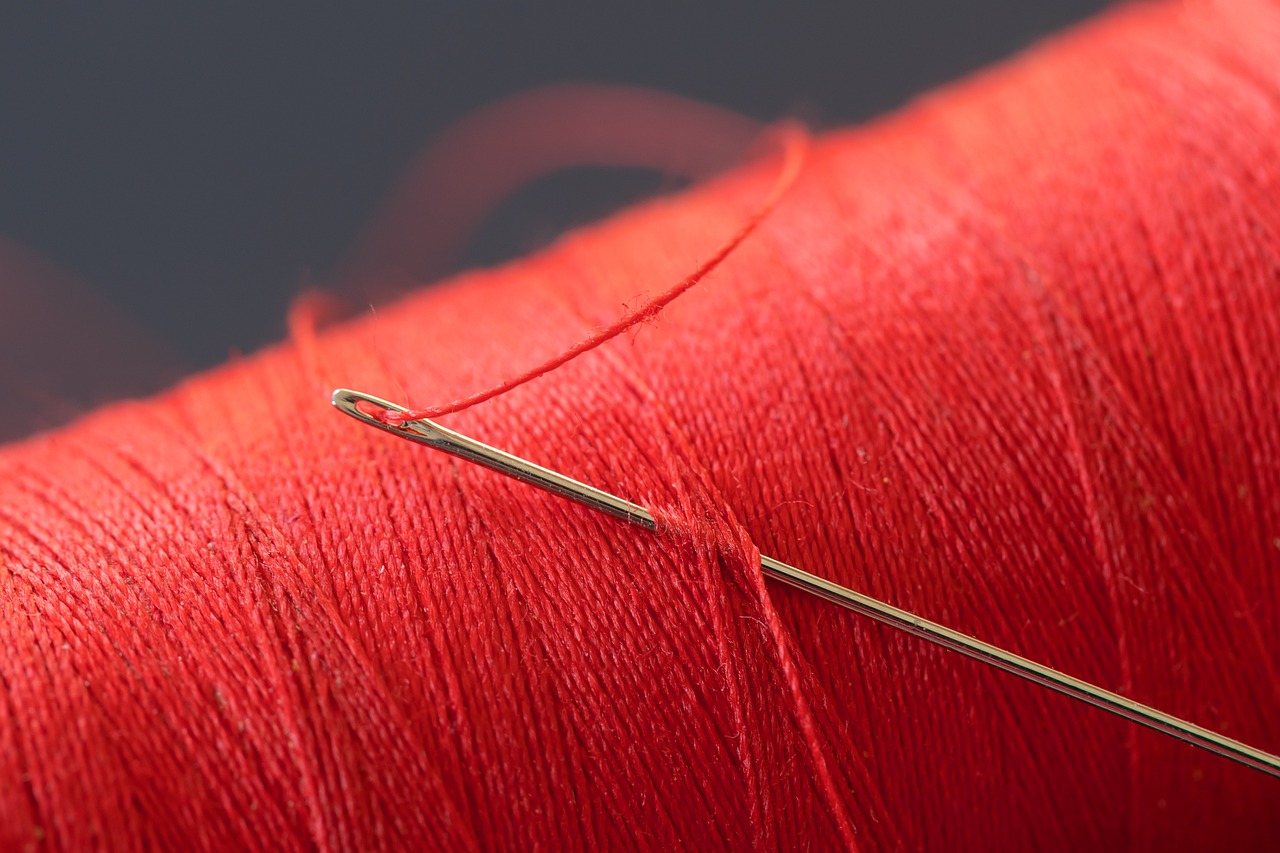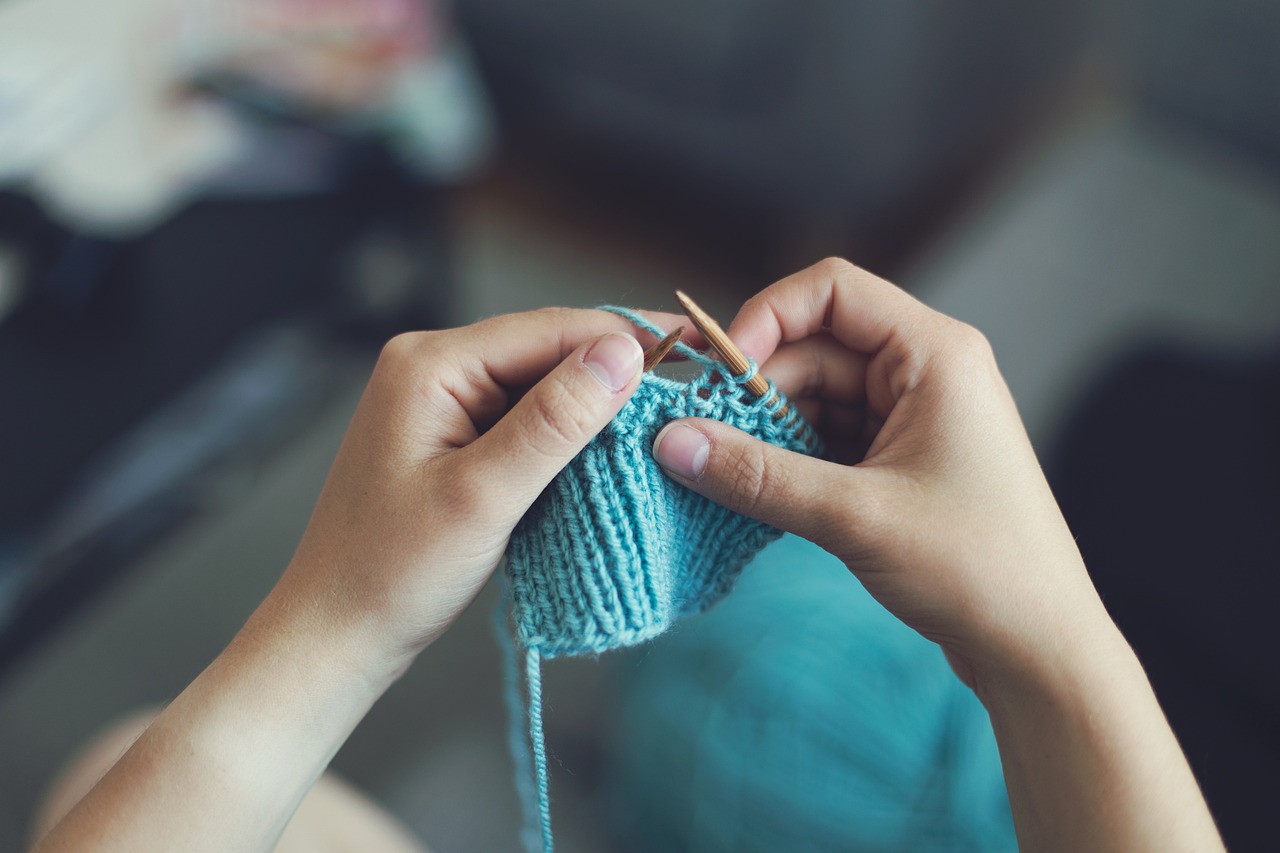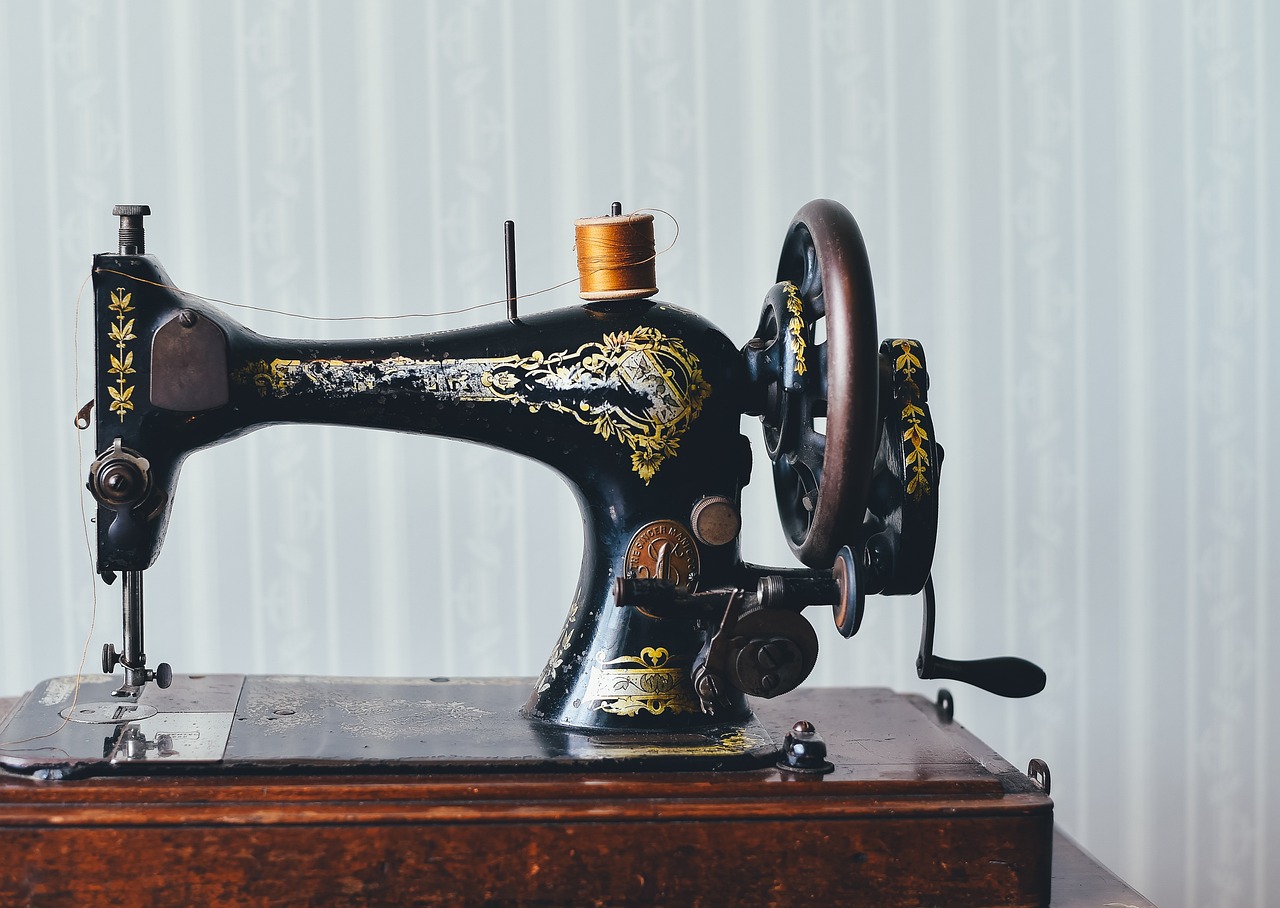Unleashing Creativity: How 1960s Sewing Patterns Inspire Modern Fashion

The 1960s was a decade of vibrant change, and its sewing patterns reflect a time when fashion was all about self-expression and creativity. As we delve into the world of 1960s sewing patterns, let’s explore how these designs can still inspire modern fashion enthusiasts today.
The Allure of 1960s Patterns
What makes 1960s sewing patterns so captivating? Here are a few key elements:
- Bold Geometric Shapes: The era was known for its striking geometric prints and bold colors.
- Flared Silhouettes: A-line dresses and flared skirts offered a feminine touch.
- Innovative Fabrics: The introduction of new materials allowed for creative designs.
Why 1960s Patterns Matter Today
Even in today’s fashion landscape, the influence of the 1960s is unmistakable. Here’s how these patterns can spark creativity:
- Reimagined Classics: Modern designers often draw inspiration from the timeless silhouettes of the 60s to create contemporary pieces.
- Customization: Using vintage patterns allows for personal flair and unique creations.
- Sustainable Fashion: Sewing your own clothes promotes sustainability, echoing the DIY spirit of the 60s.
Interactive Exploration of 1960s Patterns
Let’s take a closer look at some iconic 1960s patterns and how they can be adapted for today:
| Pattern Name | Key Features | Modern Adaptation |
|---|---|---|
| A-Line Dress | Simple lines, fitted bodice, flared skirt | Pair with a modern fabric for a fresh look |
| Shift Dress | Loose-fitting, minimalistic design | Add a belt to accentuate the waist |
| Palazzo Pants | Wide legs, comfortable fit | Combine with a fitted top for balance |
Embrace Your Inner Designer
Ready to unleash your creativity? Here’s how you can start:
- Choose a pattern that speaks to you.
- Select fabrics that reflect your personality.
- Experiment with colors and embellishments to make it your own.
The charm of 1960s sewing patterns continues to inspire modern fashion. By embracing these vintage designs, you can create unique pieces that reflect both the elegance of the past and your individuality. So, dust off those old patterns and start sewing!
Stitching Memories: The Nostalgic Allure of Vintage Designs

Embrace the Nostalgia
As you leaf through old sewing patterns, each page whispers stories of days gone by. The 1960s was a decade marked by vibrant culture and creativity. What memories does each design evoke for you? Do you remember the fabric choices, the colors that lit up your wardrobe, or the special occasions where your handmade creations were proudly worn?
Classic Silhouettes
The shapes and lines of 1960s fashion were revolutionary. From the elegant A-line dresses to the stylish shift dresses, these patterns are not just templates; they are a bridge to the past. Can you recall the first piece you crafted? What was it like to wear something made by your own hands?
Fabric and Patterns
Imagine the texture of cotton, silk, and wool as you sift through your fabric stash. Each material has its own story and character. Perhaps you have a favorite fabric that reminds you of a cherished moment? Share that memory with us! What colors and prints were your favorites?
Stitching Together Generations
Sewing is not just a solitary activity; it’s a way to connect with family and friends. Did you pass down your love for sewing to your children or grandchildren? Consider how these vintage designs can inspire the next generation. What advice would you give them about the art of sewing?
Revisiting Patterns
As you revisit these old patterns, think about how you can reinterpret them today. Modern fabrics and techniques can bring a fresh twist to these timeless designs. Which patterns are you excited to recreate? Would you choose to stay true to the original, or add your unique flair?
Join the Conversation
Let’s not keep these memories to ourselves! Share your sewing stories and experiences in our community. What have you made recently that reflects the charm of the 1960s? How do you blend the past with the present in your sewing journey?
Stitching isn’t just about fabric and thread; it’s about weaving together memories and experiences. The nostalgic allure of vintage designs invites us to celebrate our past while inspiring our future creations. What will you stitch next?
Sewing Through Time: Crafting Your Unique Style with 1960s Patterns

Embrace the Elegance of the Past
Imagine stepping back in time to a decade where fashion was not just about clothing, but a statement of individuality. The 1960s brought forth a revolution in style, and with it, a treasure trove of sewing patterns that still resonate today. Are you ready to explore these iconic designs and bring them into your own wardrobe?
Why Choose 1960s Patterns?
The patterns from the 1960s are more than just templates; they are a glimpse into a vibrant era filled with creativity and expression. From A-line dresses to bell-bottom trousers, these designs offer:
Versatility: Suitable for various occasions, whether casual or formal.
Comfort: Many patterns emphasize ease of movement and fit.
Style: Unique features such as bold prints and innovative cuts.
Getting Started with Your 1960s Sewing Adventure
Have you decided on a pattern yet? If not, let’s explore how to pick the perfect one for you:
Research: Look for vintage sewing pattern books or online resources dedicated to the 1960s era.
Consider Your Wardrobe: What items are missing? A chic A-line skirt or a mod shift dress could be the perfect addition.
Choose Your Fabric: Fabrics popular in the 1960s included cotton, linen, and polyester blends—consider bold colors and patterns.
Tips for Crafting Your Unique Style
Once you have your pattern and fabric, here are some tips to make the process enjoyable:
Personalize It: Add your unique touches, like changing buttons or adding pockets.
Practice Patience: Sewing can take time; enjoy the process and don’t rush.
Join a Community: Find local sewing groups or online forums to share your progress and seek advice.
Let’s Sew Together!
Imagine the joy of wearing something you crafted yourself, inspired by the 1960s. As you sew, think about how this process connects you to a rich history of fashion and creativity. Ready to dive into your sewing project? Grab your supplies and let’s get started!
The Art of Tailoring: Elevating Your Wardrobe with Classic Techniques
Understanding Tailoring
Tailoring is not just about sewing; it’s an art form that has been passed down through generations. In the 1960s, the techniques used in tailoring were foundational to achieving that perfect fit, and they can still be applied today to enhance your wardrobe.
Classic Techniques to Master
Let’s dive into some classic tailoring techniques that can elevate your sewing projects:
- Basting: A temporary stitch that holds fabric together, making it easier to sew the final seams.
- Fitting: The process of adjusting garments to fit the body perfectly. This can involve taking in seams or letting them out.
- Interfacing: A technique used to reinforce areas of fabric, providing structure to collars, cuffs, and waistbands.
- Hand Stitching: A skill that adds a personal touch and can be used for hems, closures, and decorative elements.
Tools of the Trade
To get started, you’ll need some essential tools:
| Tool | Purpose |
|---|---|
| Tailor’s Chalk | For marking fabric without leaving permanent marks. |
| Measuring Tape | To take precise measurements for accurate fitting. |
| Fabric Scissors | Sharp scissors designed for cutting fabric cleanly. |
| Needles and Thread | For both machine and hand sewing. |
Creating Your First Tailored Piece
Ready to try your hand at tailoring? Here’s a simple step-by-step guide:
- Choose Your Pattern: Select a 1960s sewing pattern that catches your eye.
- Select Fabric: Pick a fabric that complements your style and is suitable for your pattern.
- Take Accurate Measurements: Ensure a perfect fit by measuring yourself carefully.
- Cut the Fabric: Use tailor’s chalk to mark and cut your fabric pieces.
- Begin Sewing: Follow the pattern instructions, applying the classic techniques you’ve learned.
Embrace the Process
Remember, tailoring is about patience and practice. Celebrate your progress, and don’t hesitate to experiment with different techniques. You may find that each piece you create not only enhances your wardrobe but also brings a sense of accomplishment and joy.
Connecting with Others
Consider joining local sewing groups or online communities. Sharing your experiences can provide support and inspiration, plus you’ll meet others who appreciate the timeless art of tailoring!
From Fabric to Fashion: Transforming Vintage Patterns into Timeless Outfits
Exploring the Allure of 1960s Patterns
The 1960s were not just a decade of social change; they were also a golden era for fashion. The sewing patterns from this time are infused with creativity and style. Have you ever thought about how these vintage patterns can be transformed into modern outfits? Let’s embark on this journey together!
Choosing the Right Fabric
To begin, selecting the perfect fabric is crucial. Do you remember the feel of cotton, silk, or denim? Each fabric brings its own character to the outfit. Here are some tips for choosing:
- Cotton: Great for casual wear, breathable and easy to sew.
- Silk: Perfect for elegant dresses, adds a touch of luxury.
- Denim: Ideal for durable, everyday outfits.
Understanding Vintage Patterns
Have you ever looked at a vintage sewing pattern and wondered how to read it? Vintage patterns come with their own set of symbols and instructions. Here’s how to decode them:
- Pattern Pieces: Each piece is labeled – familiarize yourself with them.
- Seam Allowance: Most vintage patterns have a 5/8 inch seam allowance.
- Cutting Layout: Follow the layout to make the most of your fabric.
Bringing Your Outfit to Life
Once you have your fabric and pattern ready, it’s time to sew. Are you ready to transform that beautiful material into a stunning outfit? Here are some steps to guide you:
- Pre-wash your fabric: This will prevent any shrinking later on.
- Pin your pattern pieces: Secure them onto the fabric carefully.
- Cut with precision: A sharp pair of scissors will make this task easier.
Accessorizing for a Complete Look
Now that your outfit is sewn, let’s talk about accessories! Do you have a favorite necklace or pair of shoes that could elevate your outfit? Consider these ideas:
- Scarves: A vintage scarf can add a pop of color.
- Belts: Highlight your waist with a stylish belt.
- Jewelry: Simple earrings or a statement piece can complete your look.
Sharing Your Creations
Once you’ve crafted your timeless outfit, don’t forget to share it! Have you considered joining a sewing group or an online community? Sharing your journey can inspire others and foster connections.
Conclusion: Embrace Your Creativity
Transforming vintage patterns into modern outfits is not just about fashion; it’s an expression of creativity. Are you excited to dive into your sewing journey? Remember, every stitch tells a story!
Reviving Retro: A Step-by-Step Guide to Sewing 1960s Patterns
Introduction to the 1960s Sewing Patterns
Step back in time to the vibrant decade of the 1960s! Known for its bold styles and innovative designs, this era paved the way for fashion that still resonates today. Ready to breathe new life into these classic patterns? Let’s embark on a sewing adventure together!
Gathering Your Supplies
Before diving into sewing, gather these essential supplies:
Sewing machine – Ensure it’s in good working condition.
Fabric – Choose fabrics that reflect the 1960s vibe, like cottons or silks.
1960s sewing pattern – Look for original or reproduction patterns.
Scissors – Both fabric and paper scissors are necessary.
Measuring tape – Accurate measurements are crucial!
Thread – Match the thread color to your fabric.
Pins and needles – For securing fabric pieces.
Understanding Your Pattern
Each sewing pattern comes with a set of instructions. Take a moment to:
Examine the envelope – It includes information on sizing and fabric recommendations.
Read the instructions – Familiarize yourself with the steps involved.
Identify pattern pieces – Lay them out and understand their purpose.
Measuring and Cutting Your Fabric
Ready to get your hands on the fabric? Here’s how:
Take accurate measurements – Use the measuring tape to ensure the fit is perfect.
Prepare your fabric – Wash and iron it to remove any creases.
Pin the pattern to the fabric – Secure it in place to avoid any shifting.
Cut carefully – Use sharp scissors and cut along the lines of the pattern.
Sewing Your 1960s Creation
Now comes the fun part! Follow these steps:
Begin with the bodice – Follow the instructions, sewing the darts and seams together.
Add the skirt – Attach it to the bodice, ensuring alignment.
Finish the edges – Use a zigzag stitch to prevent fraying.
Insert zippers or buttons – Depending on your pattern, finish the closures with care.
Adding Personal Touches
Make your garment uniquely yours:
Choose vintage buttons – They add a special charm.
Incorporate lace or trim – Perfect for that extra touch of elegance.
Experiment with embellishments – Beads or embroidery can enhance the final look.
Final Touches and Fitting
It’s time for the final fitting! Here’s what to do:
Try it on – Check the fit and make any necessary adjustments.
Hem the edges – Ensure everything is neat and tailored.
Press your garment – A good iron will give it that polished finish.
Conclusion: Enjoying Your Retro Creation
Congratulations on reviving a piece of fashion history! Wear your 1960s creation with pride and enjoy the compliments that come your way. Remember, sewing is not just about clothing; it’s about creating memories and enjoying the journey of crafting something beautiful.
Patterns of the Past: Discovering the Hidden Stories Behind Vintage Designs
Unveiling the History of 1960s Sewing Patterns
The 1960s was a decade of remarkable change and creativity in fashion. The sewing patterns of this era not only reflect the trends of the time but also tell stories of the lives and aspirations of those who used them. Have you ever wondered what inspired the designs you cherished? Let’s explore these hidden tales together.
The Influence of Culture and Society
During the 1960s, the world was undergoing significant social transformations. The rise of counterculture, the women’s liberation movement, and the celebration of individuality all played crucial roles in shaping fashion. Imagine the excitement of using a pattern that mirrored these revolutionary changes!
Iconic Designs and Their Stories
- A-line Dresses: Inspired by the mod movement, these dresses symbolized a break from traditional styles. They were a canvas for self-expression.
- Bell-Bottom Pants: Emerging from the need for comfort and style, these pants were a staple for both men and women, representing freedom and a break from the norm.
- Shift Dresses: With their simple lines, shift dresses were perfect for the busy woman, allowing for ease of movement while maintaining elegance.
Connecting Generations Through Patterns
As you explore these patterns, think about the moments they may have witnessed. Did your mother or grandmother sew similar styles? Each stitch tells a story, connecting generations through shared experiences and creativity. What stories do your sewing patterns hold?
Reviving Vintage Patterns Today
Today, there’s a renewed interest in vintage sewing patterns. They offer a unique way to blend nostalgia with modern fashion. Consider hosting a sewing circle where you and your friends can share stories and recreate these timeless designs. It’s not just about the fabric; it’s about the memories that come with it!
What are your favorite sewing patterns from the past? Share your experiences and let’s celebrate the beauty of 1960s designs together. Engage with us and keep the legacy of these patterns alive!
Sewing as a Social Experience: Join the Community of Vintage Enthusiasts
Discover the Joy of Sewing Together
Sewing is not just a solitary craft; it can be a rich social experience that connects individuals across generations. In the vibrant world of 1960s sewing patterns, vintage enthusiasts often gather to share their love for this timeless art. Why not become a part of this engaging community?
Why Join a Vintage Sewing Community?
Being a part of a vintage sewing community offers numerous benefits:
Shared Knowledge: Learn from others’ experiences with 1960s patterns and techniques.
Inspiration: Discover how others interpret vintage styles and bring them to life.
Support: Receive encouragement and advice from fellow enthusiasts.
Fun Events: Participate in sewing meet-ups, workshops, and shows.
Finding the Right Community
There are various ways to find a community that resonates with you:
| Option | Description |
|---|---|
| Local Sewing Groups | Check community boards or libraries for local sewing clubs that focus on vintage styles. |
| Online Forums | Join online platforms like Facebook groups or Reddit communities dedicated to vintage sewing. |
| Workshops | Attend workshops at fabric stores or community centers specializing in vintage patterns. |
Engaging with the Community
Once you find a community, engaging with fellow members can be delightful:
Share Your Projects: Showcase your finished garments and share your sewing journey.
Host a Sew-Along: Organize a group project where everyone sews the same pattern.
Participate in Challenges: Take part in monthly or seasonal sewing challenges to motivate each other.
Benefits of Sewing Together
When you sew with others, the experience becomes even more rewarding:
Social Interaction: Enjoy the company of like-minded individuals and form lasting friendships.
Skill Development: Gain new skills through group learning and shared insights.
Access to Resources: Tap into the collective resources, such as books, patterns, and tools.
Joining a community of vintage sewing enthusiasts not only enriches your sewing experience but also fosters friendships and creativity. So, pick up your needle, gather your fabric, and step into the beautiful world of 1960s sewing patterns with others who share your passion!
The Joy of Handcrafting: Embracing the Therapeutic Benefits of Sewing
Have you ever felt the soft texture of fabric slip through your fingers as you create something beautiful? Sewing is not just a hobby; it’s a journey into creativity and relaxation. Let’s explore the therapeutic benefits of this timeless craft that has brought joy to many.
Why Sewing?
Engaging in sewing offers numerous benefits beyond just making clothes or crafts. Here are some reasons why you might consider picking up this delightful activity:
- Mindfulness: Sewing requires focus and concentration, allowing you to immerse yourself in the moment and forget daily stresses.
- Creativity: Each stitch is a step towards creating something uniquely yours, giving you a sense of accomplishment.
- Fine Motor Skills: The repetitive motions involved in sewing can help improve dexterity and coordination.
- Community: Joining sewing groups can foster friendships and a sense of belonging.
Therapeutic Benefits
Now, let’s delve deeper into how sewing can be therapeutic:
- Stress Relief: The rhythmic motion of sewing can be meditative. As you stitch, your mind can relax, helping to lower anxiety levels.
- Boosting Confidence: Completing a project, no matter how small, can provide a tremendous sense of achievement and boost your self-esteem.
- Memory Retention: Learning new patterns and techniques can stimulate your brain, enhancing cognitive function.
Getting Started
If you’re feeling inspired to embark on your sewing journey, here are some tips to get you started:
- Choose Simple Patterns: Begin with easy 1960s-inspired patterns that capture your interest but aren’t too complex.
- Gather Supplies: You’ll need fabric, thread, needles, and a sewing machine if you prefer, or you can sew by hand!
- Set Up a Comfortable Space: Create a cozy sewing nook where you can work without distractions.
Join a Community
Consider joining a local sewing club or online forum. Sharing your projects and experiences with others can add to the joy of handcrafting. You might even find a friend who shares your passion for 1960s sewing patterns!
In Conclusion
Embracing sewing as a hobby can lead to a fulfilling and therapeutic experience. Whether you’re creating clothing, home decor, or gifts for loved ones, the joy of handcrafting is in the journey as much as it is in the finished product. So, gather your materials, find a comfy chair, and let your creativity flow!
Personalizing Tradition: Adding Your Unique Touch to Classic Patterns
Embrace Your Creativity
In the world of sewing, the 1960s stand out as a decade filled with vibrant patterns and bold styles. While these classic designs hold their own charm, there’s always room to inject your personality into them. Let’s explore how you can personalize these vintage patterns and make them truly yours.
Understanding the Basics
Before you start altering patterns, it’s essential to understand the original design. Take a moment to:
- Study the Pattern: Look closely at the lines, shapes, and style elements.
- Reflect on Your Style: Think about how this pattern can reflect your personal aesthetic.
Choosing the Right Fabrics
The fabric you choose can dramatically alter the look of any sewing project. Consider:
- Color Palette: Select colors that resonate with you.
- Texture: Mix different textures to add depth.
- Prints: Don’t shy away from mixing prints to make a bold statement!
Modifying the Design
Now that you have your pattern and fabric, it’s time to modify the design. Here are some ideas to get you started:
- Add Embellishments: Think about lace, buttons, or beads.
- Alter the Length: Adjust hemlines to suit your preference.
- Change the Sleeves: Experiment with different sleeve styles like cap, puff, or long sleeves.
Combining Patterns
Why not mix and match different patterns? This can create a unique look that is entirely your own. Consider:
- Using Different Skirts: Pair a classic bodice with a modern skirt design.
- Layering: Combine two patterns for a fun layered effect.
Personal Touches
Finally, add personal touches that reflect your life and experiences:
- Incorporate Sentimental Fabrics: Use fabric from old clothes or family heirlooms.
- Include Custom Labels: Sew in labels that showcase your name or a special date.
Share Your Creations
Once you’ve personalized your pattern, share your work with others! Join sewing groups, share on social media, or create a scrapbook of your projects. Engaging with others can inspire your next creation and help you connect with fellow sewing enthusiasts.
Personalizing 1960s sewing patterns allows you to celebrate tradition while embracing your unique style. Remember, sewing is not just about creating garments; it’s about telling your story. So, gather your materials and let your creativity shine!
